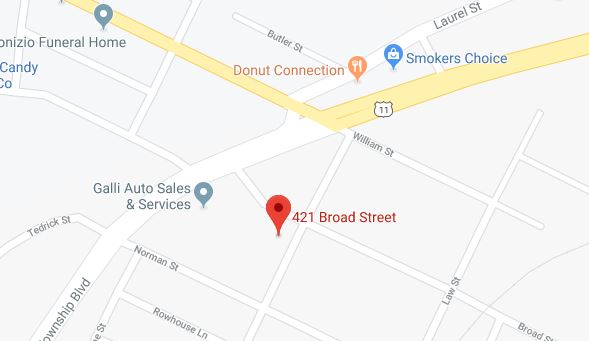About Pittston Township
Pittston Township is a small community that sits between Scranton and Wilkes Barre near Interstates 476 and 81. The Township is not only home to many quiet and safe residential neighborhoods, but also prosperous industry and retail stores.
Visit the contact page for a map and directions!
The Pittston township formed in 1768 under Connecticut was one of the five townships of the Susquehanna Land company, and was surveyed and established in 1768. These townships were each 5 square miles. However, in 1784 the high waters destroyed the surveyors’ marks, and an act was passed for a new survey to ascertain the land claims of the Connecticut settlers. The lands in this township thus resurveyed became certified Pittston and contained thirty-six square miles.
At a glance the reader will know Pittston (spelled originally Pittstown) was named for Sir William Pitt, the Elder and shares its namesake with the City of Pittsburgh. It is situated near the Susquehanna river and in the northeast corner of the county in the Wyoming Valley.
For sixty years after the settlements were begun in Pittston, the Yankee element predominated in the population of the township, but with the discovery of coal began the great influx of the various European nationalities that make up the heterogeneous population as it is found today. The Scotch came in large numbers in 1850-1855, although many of the most experienced miners came to America before coming to Pittston, attracted by the gold mining of California. The inroad of the Welsh was more gradual, as they had previously come to the older mines at Carbondale, and came down the valley as the coal fields were developed. The coal interests soon became the largest source of wealth in the township and remained so well into the 20th century.
On January 22, 1959, in nearby Jenkins Township, the River Slope Mine, an anthracite coal mine owned by the Knox Coal Company, flooded when coal company management had the miners dig too close to the riverbed. Tunneling sharply upwards toward the Susquehanna River, the miners reduced the thickness of rock between the mineshafts and the river bed to about 6 feet. (35 feet was considered the minimum for safety.) This caused the waters of the river to break through into the mine. The Knox Mine Disaster, as it has come to be known, essentially ended deep mining in the Wyoming Valley as almost all of the coal company’s mines connected.
| Population | 3,450 |
| Square Miles | 19 |
| Type of Government | Township Board of Supervisors |
| Congressional District | 11 |
| Legislative District | 114 (House); 14 (Senate) |
| School District | Pittston Area |
For detailed statistics on the Pittston area click here.

